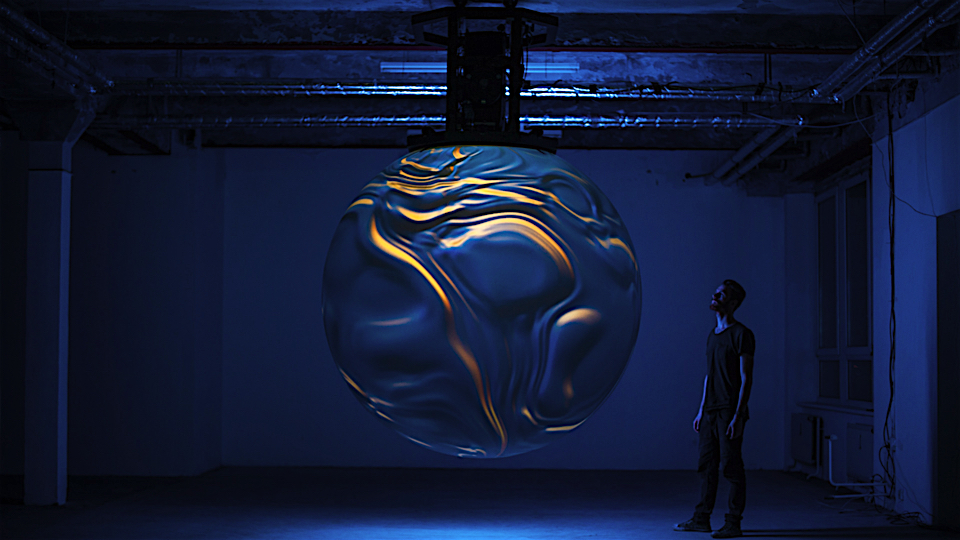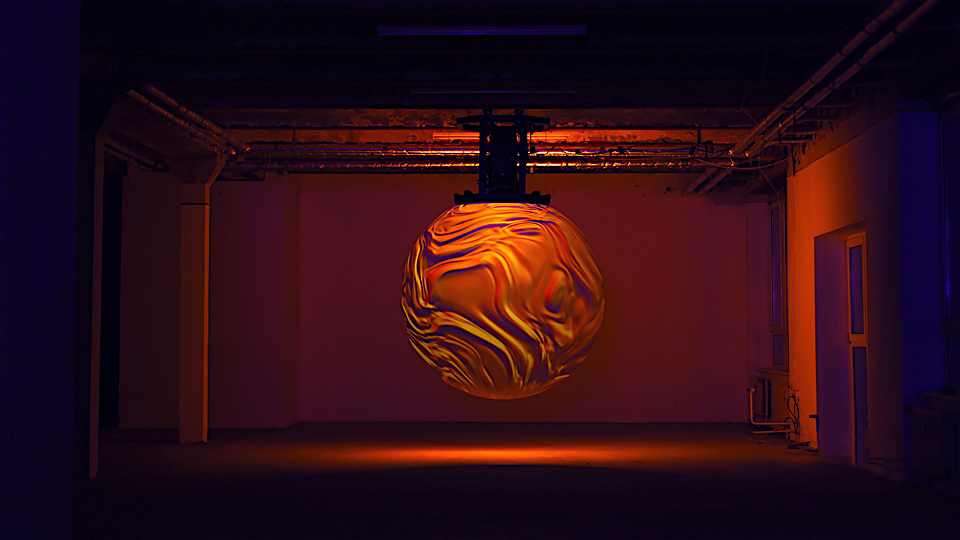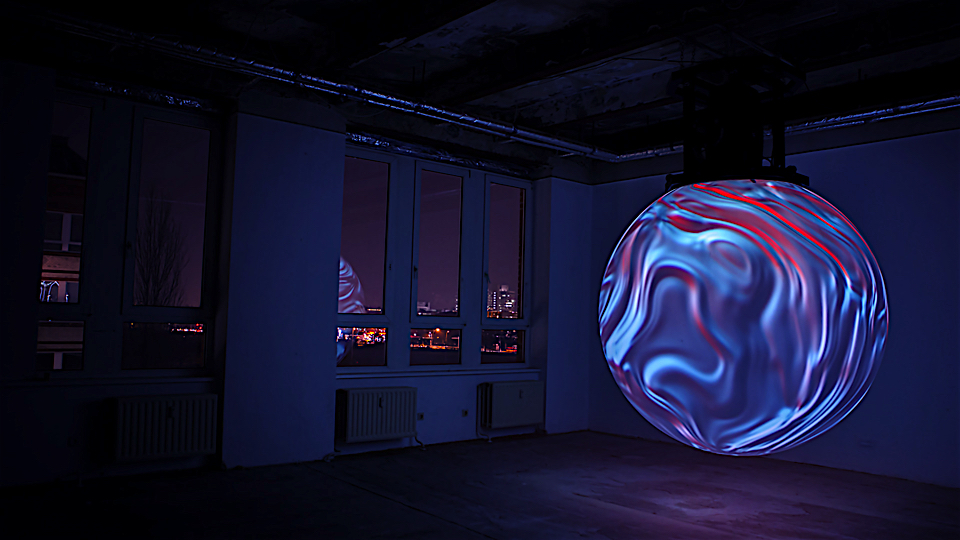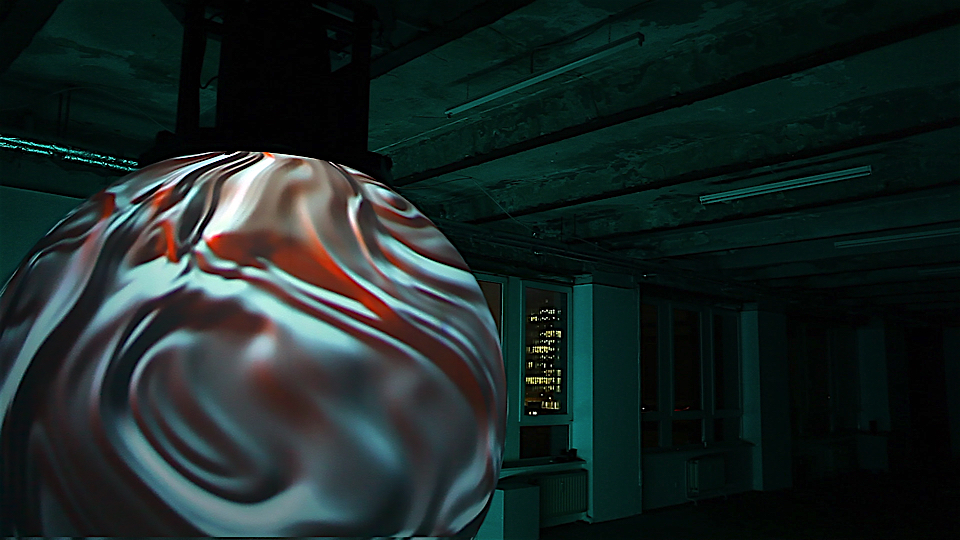SENSITIVE SCIENCE
anima

Contemporary artist Nick Verstand collaborated together with digital design studio Onformative and spherical projections experts Pufferfish to develop this enchanting interactive installation called ANIMA.
ANIMA explores the nature of living things. The interactive art installation investigates how humans emotionally relate to an artificial entity. By the use of a single projector coupled with a hemispherical lens the spherical imagery is achieved which emanates from inside the object. Both image and sound are generated in real-time, based on the entity’s contingent perception of our presence.
How would you describe yourself as an artist?
I think my approach is quite different from the ‘traditional artist’. My way of working is the result of my diverse background in artistic media like sound and light, as well as my entrepreneurial background starting and running my own creative agencies. This leads me to work on projects that are beyond my comfort zone in terms of artistic skills. Over the years I learned to trust my ability to collaborate with others that are skilled in a specific field, and create something greater than everyone’s individual skillset, including my own.
How did your background in music influence your project?
I got into electronic music at an early age, starting playing and producing records around my 19th birthday. Back then I was studying for my high school exams and needed distraction, and discovered I much preferred working on music than studying. Shortly after I quit my studies and started being involved with music fulltime. The thing I love most about music is the flow it creates when experiencing it. It is so intuitive and meditative, and creates a space for me beyond rational thought. I try to imbue this feeling into my artworks as well. My perspective on a lot of contemporary art is that it’s often quite rational. What I hope to achieve is to create experiences that are more mysterious, like a great record feels to me. Something that we can love from our soul not only our rational mind.
What fascinates you about designing a project like ANIMA?
What I really liked about creating ANIMA is the possibility of actualizing something in physical reality that started as just a tiny idea in my mind. This realization was so profoundly powerful, that it completely liberated my thinking about any future form factors. This was possible because of the incredibly skilled team we assembled in the process.
Can you describe your creative process?
Normally all this isn’t linear, but from the perspective of this interview I wrote down some steps:
Assembling information of the world around us, cultural events, questions of our time, scientific/technological developments, works other artists are producing, etc. this is a continuous process
When at a calm moment, let’s say I take a walk in the forest, and my mind is open and unused, some of these happenings are able to connect.
This connection I then scrutinize and developed further by researching its, often scientific, background. I then formulate a rough idea of what the audience will experience, from which results what the form factor could be.
Breaking down the form factor into its specialized components and finding the people who are able to design and execute it. This phase often also means trying and secure the funding as well as finding a relevant location to showcase the project once it’s complete
Now the actual design phase begins, where I work with the team of artists, technologists and scientists to design and develop the piece
Exhibiting the first iteration of the work, after which I look for more opportunities worldwide and further develop the work with each exhibit. I do this because I need to gauge the audience their reactions and attune the piece to their behavior. A work often feels finished after about 4 or 5 showcases.
How did you end up working together with the Berlin based digital design studio Onformative?
When I created the concept for ANIMA realized early on I needed some stellar programmers to create the generative fluid emulation I envisioned. By searching the internet I found Onformative’s website and got in touch, after which they joined the project. From this I learned you can just reach out and ask for a collaboration.
Are you currently working on a project?
Always! I develop projects in parallel with different teams to achieve a sort of constant output. One project I am currently working on is a new iteration of a work called POLARIS for SXSW 2017 in Austin (Texas, USA). This project I develop in collaboration with Dutch science institute TNO, who are helping me to create a way to measure the collective emotional experience of light, sound and space in real-time through the brainwaves of the audience, which we then feed back as color and sound in the encompassing space.
What does the future hold for you?
Hopefully a future in which I can travel the world, create the things I imagine and share all this with the people I love.
Interview by Claire Claire Gralund






